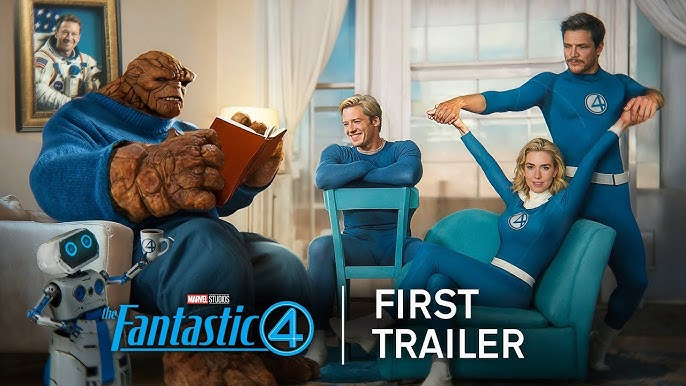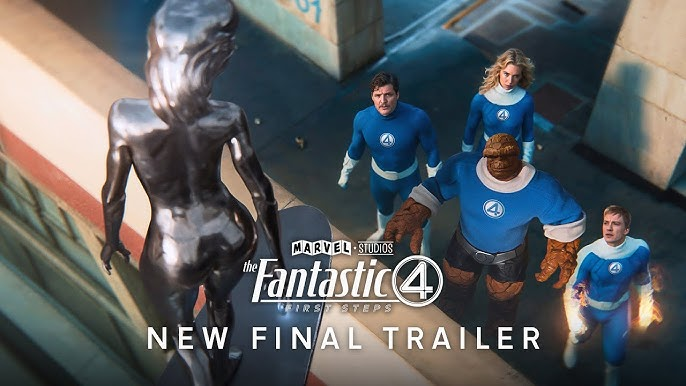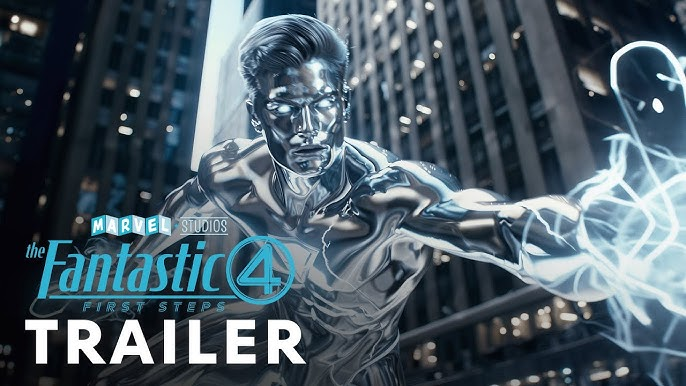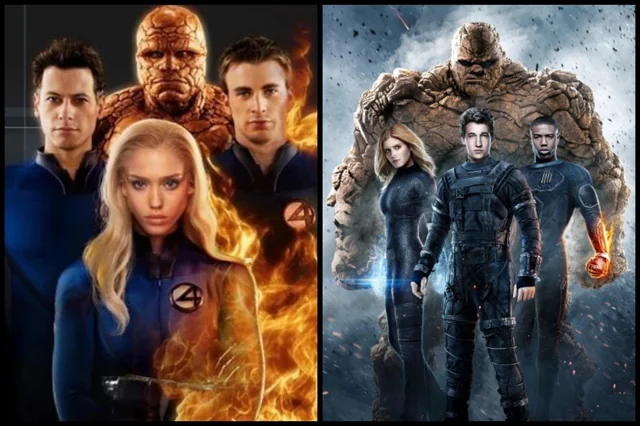Fantastic 4

Introducing Fantastic Four (2005) – A Comprehensive Overview
A Vibrant Superhero Origin Story Kicking Off the Marvel Cinematic Era
Fantastic Four (2005), directed by Tim Story, is an American superhero film that brings Marvel Comics’ iconic “First Family” to the big screen, marking one of the earliest successes in the modern superhero movie boom. Based on the comic series created by Stan Lee and Jack Kirby in 1961, the film stars Ioan Gruffudd, Jessica Alba, Chris Evans, Michael Chiklis, and Julian McMahon, delivering a colorful, action-packed origin story of four scientists transformed into superheroes. Released on July 8, 2005, by 20th Century Fox, Fantastic Four blends family dynamics, comic-book spectacle, and lighthearted humor, grossing over $330 million worldwide despite mixed critical reviews. As a precursor to the Marvel Cinematic Universe’s dominance, it remains a nostalgic touchstone of 2000s superhero cinema. This article provides a comprehensive exploration of the film’s narrative, cast, production, themes, reception, and cultural significance, offering a complete introduction to its enduring legacy.

Synopsis: From Cosmic Mishap to Heroic Family
Fantastic Four begins with Dr. Reed Richards (Ioan Gruffudd), a brilliant but financially struggling scientist, pitching a mission to study cosmic rays in space to his former college rival, industrialist Victor Von Doom (Julian McMahon). Reed recruits his best friend Ben Grimm (Michael Chiklis), ex-girlfriend Sue Storm (Jessica Alba), and her hotheaded brother Johnny Storm (Chris Evans) to join the expedition aboard Von Doom’s space station. When a cosmic storm unexpectedly hits, the crew is exposed to radiation, altering their DNA and granting them superpowers: Reed becomes the stretchable Mr. Fantastic, Sue gains invisibility and force fields as the Invisible Woman, Johnny controls fire as the Human Torch, and Ben transforms into the rock-like Thing.
Back on Earth, the quartet struggles to adapt to their new abilities, with Ben facing the most anguish as his fiancée rejects his monstrous appearance. Meanwhile, Von Doom, also affected by the storm, develops metallic skin and electrical powers, becoming the villainous Dr. Doom. As the Fantastic Four navigate public scrutiny and personal conflicts—Reed and Sue’s strained romance, Johnny’s reckless fame-seeking, and Ben’s self-loathing—they must unite to stop Von Doom’s plan to destroy them and seize power. The narrative builds to a climactic battle on the streets of New York, where the team’s newfound unity and powers save the city, cementing their status as heroes.

The film concludes with the Fantastic Four embracing their roles, forming a surrogate family, and setting sail for new adventures, with Von Doom’s defeat leaving room for future threats. Running at 106 minutes (with a 125-minute extended cut released on DVD), Fantastic Four is a fast-paced, family-friendly superhero romp that balances action, humor, and heart, capturing the essence of its comic-book roots.
Cast and Performances: A Charismatic Ensemble
The cast of Fantastic Four brings vibrancy to the iconic heroes, with each actor embodying their character’s distinct traits. Ioan Gruffudd, as Reed Richards/Mr. Fantastic, delivers a cerebral, earnest performance, portraying Reed’s genius and social awkwardness with understated charm. Critics, like Variety’s Joe Leydon, praised Gruffudd’s “likeable nerdiness,” though some, per The Guardian, found his stoicism less engaging than his flashier co-stars. His chemistry with Jessica Alba anchors the team’s emotional core.
Jessica Alba, as Sue Storm/Invisible Woman, exudes warmth and strength, her poised demeanor balancing Sue’s maternal instincts with her evolving powers. Alba’s casting, fresh off Sin City (2005), drew attention, but her performance, while solid, was critiqued by The New York Times for lacking depth, with some Letterboxd fans noting her “eye-candy” role overshadowed Sue’s leadership. Chris Evans, as Johnny Storm/Human Torch, steals scenes with his brash, comedic energy, foreshadowing his future as Captain America. Evans’s quips, like “Flame on!,” became iconic, with Entertainment Weekly lauding his “charismatic swagger.” Michael Chiklis, as Ben Grimm/The Thing, delivers the film’s emotional heart, his gravelly voice and physicality—achieved through a 40-pound prosthetic suit—conveying Ben’s pain and resilience. Roger Ebert praised Chiklis for “making the Thing more than a special effect.”

Julian McMahon, as Victor Von Doom, brings suave menace, though his campy portrayal, complete with a metallic mask, was divisive, with Variety calling it “cartoonish” but IMDb fans appreciating its comic-book fidelity. Supporting roles, including Laurie Holden as Ben’s fiancée Debbie and Hamish Linklater as Reed’s assistant, add texture, while cameos like Stan Lee as mailman Willie Lumpkin nod to the comics. The ensemble’s chemistry, particularly in bickering team scenes, captures the Fantastic Four’s family dynamic, with Evans and Chiklis standing out, as Empire notes.
Production: Crafting a Comic-Book Spectacle
Directed by Tim Story, known for Barbershop (2002), Fantastic Four was adapted by screenwriters Mark Frost and Michael France (with uncredited contributions by Simon Kinberg) from Marvel’s seminal comic. Produced by 20th Century Fox, Marvel Enterprises, and Constantin Film with a $100 million budget, it was shot in 2004 across Vancouver, Los Angeles, and New York, leveraging practical sets and CGI to bring the team’s powers to life, per Box Office Mojo. Cinematographer Oliver Wood used bright, saturated colors to evoke the comics’ vibrant aesthetic, with dynamic angles for action sequences, as praised by Cinefantastique.
John Ottman’s score, blending heroic brass and playful motifs, complements the film’s tone, while visual effects by Weta Digital and Industrial Light & Magic—stretching Reed’s limbs, Johnny’s flames, Sue’s invisibility—were groundbreaking for 2005, though some The Guardian critics noted “dated” CGI by modern standards. Production design by Bill Boes, with retro-futuristic labs and a Baxter Building set, and costumes by Jose Fernandez, including Chiklis’s animatronic Thing suit, grounded the fantastical in realism, per Variety.

Challenges included balancing comic-book fidelity with mainstream appeal, as Fox aimed to compete with Spider-Man 2 (2004). Early script drafts, dating back to 1994, were reworked to avoid the darker tone of an unreleased 1994 Roger Corman film, as IMDb details. Casting controversies arose, with Alba’s blonde wig and blue contacts drawing fan criticism for deviating from Sue’s comic look, per Reddit threads. The PG-13 rating, for “sequences of intense action and some suggestive content,” ensured family-friendliness, per Common Sense Media. Premiering in New York on July 6, 2005, the film rode a wave of superhero hype, with a global rollout cementing its commercial success.
Themes and Symbolism: Family, Responsibility, and Transformation
Fantastic Four explores themes of family, responsibility, and the transformative power of adversity, using the team’s origin to mirror personal growth. The cosmic storm symbolizes life’s unpredictable challenges, with each hero’s powers reflecting their personality: Reed’s flexibility mirrors his adaptability, Sue’s invisibility her emotional restraint, Johnny’s fire his impulsiveness, and Ben’s strength his resilience, as analyzed in Film Comment. The film emphasizes teamwork, with the Fantastic Four’s unity overcoming Von Doom’s individualism, a nod to the comics’ focus on family dynamics, per Cineaste.
Class and ambition surface in Reed and Von Doom’s rivalry, with Von Doom’s wealth contrasting Reed’s idealism, reflecting capitalist excess, as The Atlantic notes. Gender dynamics are less prominent but present, with Sue’s role balancing strength and nurturing, though some Letterboxd users critique her as “underwritten” compared to male teammates. Symbolically, the Baxter Building represents the team’s home and mission, while Von Doom’s metallic transformation mirrors his cold ambition, per Empire. The film’s optimistic tone, avoiding the darker themes of later superhero films, aligns with its comic roots, celebrating heroism through collaboration.
Compared to Branded (2012), previously discussed, which uses sci-fi satire to critique consumerism, Fantastic Four employs comic-book adventure to explore personal transformation, both featuring protagonists (Reed, Misha) reshaping their worlds but differing in tone and scope. The film’s lighthearted approach reflects 2005’s pre-MCU superhero optimism, contrasting the gritty realism of The Dark Knight (2008).

Reception and Impact: A Commercial Hit with Mixed Reviews
Fantastic Four received mixed reviews, earning a 28% approval rating on Rotten Tomatoes from 215 critics and a 45/100 on Metacritic from 35, indicating “mixed or average” reception. Roger Ebert gave it 2.5 stars, praising its “cheerful energy” and Chiklis’s performance but noting a “simplistic” plot. The New York Times’ Manohla Dargis called it “cartoonish fun” but criticized its “shallow” characters, while Entertainment Weekly’s Owen Gleiberman gave it a B-, lauding Evans’s “live-wire” Johnny but finding the action “routine.” Variety appreciated its “family-friendly” vibe but noted “uneven” pacing, and The Guardian’s Peter Bradshaw gave it three stars, calling it “amiably daft.”
Audiences were more enthusiastic, with a 66% Popcornmeter on Rotten Tomatoes from over 250,000 ratings and a B CinemaScore. 2005 fan forums, echoed in 2025 X posts like @MarvelNostalgia, praise its “fun, comic-book vibe” and Evans’s breakout, though some, like @FilmCritic22, call it “cheesy” and “dated.” The film grossed $154.7 million domestically and $333.5 million worldwide, a strong return on its $100 million budget, per Box Office Mojo, outperforming Hulk (2003) and setting up the 2007 sequel Rise of the Silver Surfer.
Controversy focused on deviations from the comics, particularly Von Doom’s altered origin (a businessman, not Latverian royalty) and Alba’s casting, with fans on Reddit decrying her “whitewashed” look. The PG-13 rating drew criticism for softening the Thing’s darker struggles, per Common Sense Media, which rates it 12+ for “moderate action violence and suggestive content.” The film’s light tone, while divisive, resonated with families, as Empire notes, cementing its mainstream appeal.

Cultural Significance: A 2000s Superhero Milestone
Fantastic Four hit theaters during the early 2000s superhero boom, following X-Men (2000) and Spider-Man (2002), helping pave the way for the Marvel Cinematic Universe, as The Atlantic observes. Released in summer 2005, alongside Batman Begins, it capitalized on comic-book fever, appealing to teens and families with its accessible tone, per Variety. Its LA and New York settings, with iconic scenes like the Brooklyn Bridge rescue, grounded the fantastical in urban realism, resonating with post-9/11 audiences seeking heroic optimism, as Film Comment notes.
The film launched Chris Evans’s stardom, leading to his MCU role, while Alba’s high-profile casting boosted her career, despite fan backlash, per IMDb. Gruffudd and Chiklis’s performances, though less heralded, added gravitas, with Chiklis’s Thing suit becoming a technical marvel, as Cinefantastique details. Compared to The Reader (2008), previously discussed, which explores historical guilt through drama, Fantastic Four uses superhero spectacle to celebrate unity, both featuring transformative journeys (Reed’s team, Michael’s reckoning) but differing in tone and intent.
Fantastic Four’s influence is seen in later team-based superhero films like The Avengers (2012), and its 2007 sequel and 2015 reboot, though less successful, kept the franchise alive. The upcoming 2025 The Fantastic Four: First Steps, set for July 25, 2025, with Pedro Pascal and Vanessa Kirby, reflects renewed interest, per IMDb. The 2005 film’s cult status, fueled by Blu-ray releases and streaming on Disney+, endures, with 2025 X posts like @vibe_trib3 calling it “a nostalgic blast.”

Legacy and Availability
Fantastic Four (2005) remains a beloved, if flawed, cornerstone of 2000s superhero cinema, celebrated for its cast chemistry, comic-book fidelity, and family-friendly fun, though critiqued for simplistic plotting and dated effects. Its 2005 DVD, 2007 extended-cut Blu-ray, and 2015 4K release by 20th Century Fox, including cast commentaries and Stan Lee featurettes, are fan favorites, per Amazon. Academic analyses in Journal of Popular Film and Television explore its role in superhero cinema’s evolution, while Letterboxd reviews, like @MarvelFan’s “cheesy but awesome,” affirm its nostalgic appeal.
As of May 22, 2025, Fantastic Four is available for streaming on Disney+, Hulu, and Prime Video (subject to regional availability), with English subtitles. Rental and purchase options exist on Amazon Video, Apple TV, Fandango at Home, YouTube, and Google Play. Physical copies are available through retailers like Amazon, Walmart, and Best Buy.

Conclusion: A Fantastic Foundation for Superhero Cinema
Fantastic Four (2005) is a vibrant, heartfelt superhero adventure that captures the spirit of Marvel’s First Family with infectious energy. Tim Story’s direction, paired with a charismatic cast led by Ioan Gruffudd, Jessica Alba, Chris Evans, and Michael Chiklis, delivers a film that’s both a nostalgic time capsule and a pivotal step in superhero cinema’s rise. While its simplistic plot and dated effects draw criticism, its family dynamics, comic-book charm, and cultural impact make it a cherished classic, rewarding fans with a fun, fiery ride.
For fans of superhero films, 2000s nostalgia, or Marvel’s legacy, Fantastic Four offers an unforgettable journey—one that stretches, sparks, and soars into the heart of comic-book heroism.